This GPS running watch may well Polar-ise opinion (sorry, not sorry). Some outdoor enthusiasts will love the Polar Grit X2 Pro, others should avoid it. It all depends on your personal preferences regarding budget, exercise priorities and several other factors. Which camp will you be in?
Here’s our take on the Polar Grit X2 Pro. The positives are fourfold. Firstly the 1.39” AMOLED screen is crystal clear, super-bright and a real delight to use – it easily blows the Garmin Fenix 7 Pro’s screen out of the water. Secondly the Grit X2 Pro’s mapping and routes, using Komoot integration, make navigating with your watch easier than almost all competitors. Thirdly the military grade design is tough and rugged, and 100% ready for outdoorsy adventure. And finally, Polar delivers a solid all-round user experience, with an intuitive app, solid battery life and good all-round GPS accuracy.
There are negatives too, however. The Polar Grit X2 Pro is very expensive and arguably over-priced. Is it worth £260 more than the Suunto Race? Not really, no. It’s quite heavy (79g) with a thick, chunky design that isn’t the most comfortable, and can feel a tad bulky and bouncy on the wrist during intense running. And, ultimately, it’s not a particularly running-centric watch. It probably performs better for trekking, hiking and general outdoors adventures, rather than being refined, streamlined and specialised for trail running.
 LFTO
LFTOwww.polar.com
Pros
- Borderline indestructible design
- Superb AMOLED screen
- Excellent mapping with Komoot integration
- Great waterproof rating
Cons
- Fairly chunky on the wrist
- Has more hiking functionality than running
- No contactless payments or music storage
| Battery life (smartwatch mode) | Up to 10 days |
| Battery life (GPS) | Up to 43 hours |
| Display type and size | AMOLED, 454 x 454 resolution, 1.39” |
| Weight | 79g (with silicone band) |
| Waterproof rating | 10ATM |
All in all, though, the Polar Grit X2 Pro is a high-end watch with some excellent features. If you can stomach the price, the AMOLED screen is superb and the mapping options are top-tier – and for trail runners who also hike, trek and climb, it’s a versatile all-rounder.
Design and Screen
The AMOLED screen of the Polar Grit X2 Pro is excellent – vivid, crisp and techni-coloured, with a good size. It’s a big selling point of the watch. The downsize of an AMOLED screen is that it burns the battery quickly; the positive is that the information display is far superior to simpler screens, and it works far better for things like maps.

Sized 1.39” wide, the AMOLED (active-matrix organic light-emitting diodes) screen is housed within a 48.6mm stainless steel bezel, although you can opt for a titanium version for an extra £100. The sapphire glass screen is touchscreen compatible with a 454x454 resolution. You get an always-on setting, or can use the normal standby setting to preserve battery life.
In terms of hardware, you get five buttons – two on the left-hand side of the bezel, three on the right. You don’t get a rotating crown, which is perhaps a shame, but the user interface is simple and straight-forward, and with five buttons it’s easy to operate the watch once you’ve got accustomed to the system.
GPS Accuracy
I used the Polar Grit X2 Pro on several fell runs in the Lake District, including a 21km summit-bagging linear from Keswick to Buttermere and a 15km loop of Crummock Water. I also wore the watch on a four-day, 100km fast trek of a coast-to-coast trail through the mountains of Madeira, including summiting the iconic Pico Ruivo (1,861m).

During all of these outings, I never encountered any problems with the accuracy of GPS tracking. The watch locked onto GPS quickly and efficiently, and all of the traces of my routes appeared to track correctly without any anomalies. Even when using the lowest 2-minute GPS interval setting, the tracks of my fast-hikes in Madeira were accurate enough.
All of this was probably courtesy of the Polar Grit X2 Pro’s top-tier GPS credentials. You get dual-frequency service and access to all five of the main satellite networks (GPS, GLONASS, Galileo, Beidou and QZSS), which helps improve all-round accuracy.
Weight and Size
On our scales the Polar Grit X2 Pro weighs 79g with a silicone band. This is quite heavy – not the heaviest, but far from the lightest too. For comparison, the Grit X2 Pro is far heftier than ultralight watches we’ve tested. It’s 25g heavier than the Garmin Instinct Solar 2 and 40g heavier than the Coros Pace 3. But it’s slightly lighter than other chunky, fully-featured smartwatches. The Grit X2 Pro is 9g lighter than the Coros Vertix 2S and 4g lighter than the Suunto Race.
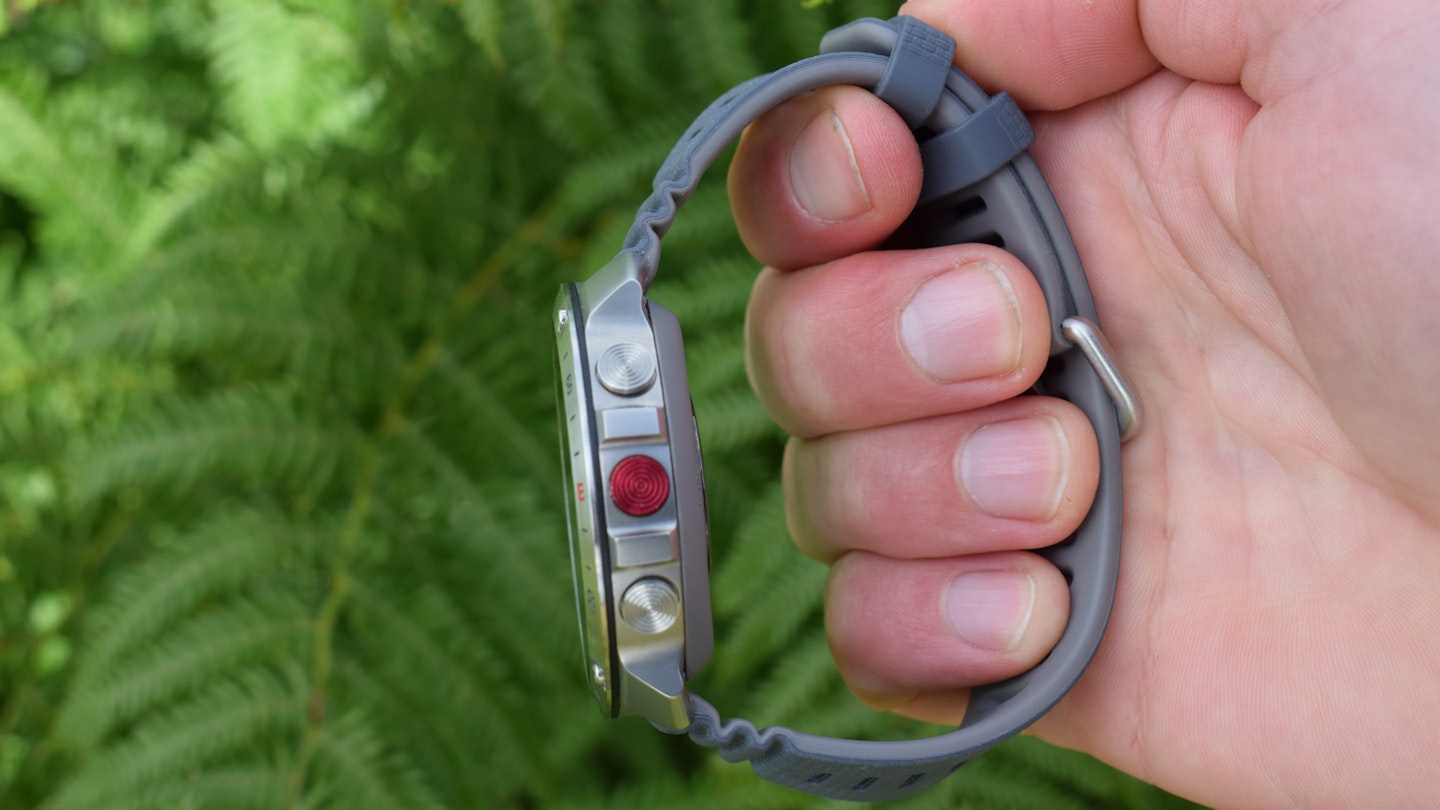
The Grit X2 Pro is quite a wide, thick watch. The bezel size is 48.6x48.6x13.4mm. Some users will see the excellent screen as adequate compensation for the heavier, chunkier design; others may find it a tad uncomfortable. Certainly for those with smaller wrists, it may feel too big. I found the watch a little cumbersome when running faster, with a sensation that it was a little unstable and “bouncy” on the wrist, but I have a relatively dynamic arm swing, so other runners may not notice this as much.
Battery Life
Polar states the following official battery credentials: 43 hours in performance training mode (using maximum GPS accuracy); 5.8 days in eco training mode (which still tracks your movements but less frequently and thus with less accuracy); and 10 days in normal smartwatch mode.
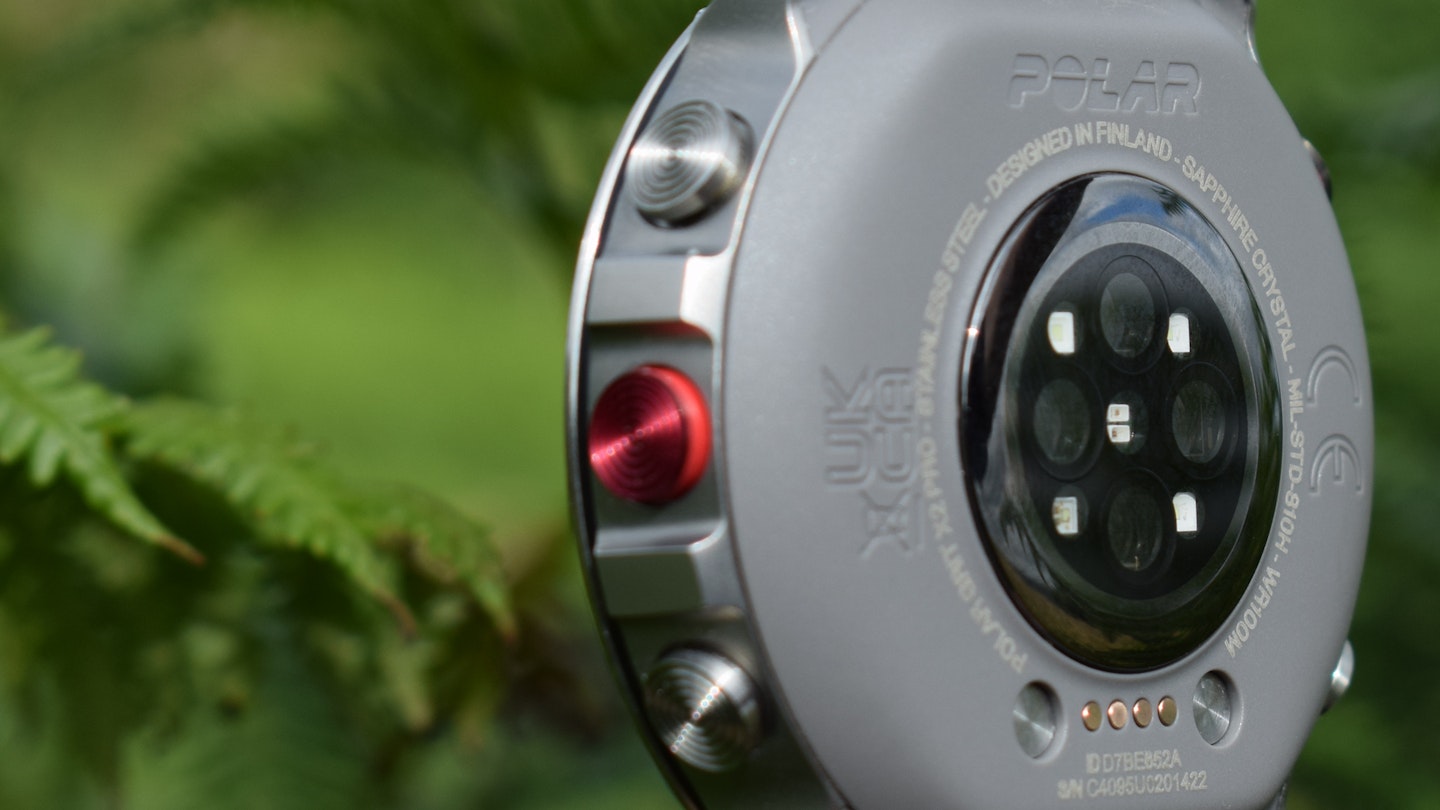
We’d describe these results as decent rather than exceptional, but for the vast majority of users the battery will provide more than enough juice for regular activities. The super-bright AMOLED screen is the culprit when it comes to burning the battery, and so – if you’re planning a hardcore, multi-day FKT where maximum GPS accuracy is essential – you might want to look for a watch with a simpler screen and better overall battery.
I used the Polar Grit X2 Pro on a six-day trip to the adventure destination of Madeira, featuring four days of fast-hiking along the 100km Madeira Island Ultra Trail. At the start of my trip the battery had 92%. I used the watch for four full days, using the setting with GPS pins dropped every 2 minutes (rather than every 1 or 2 seconds). The battery lasted fine for the whole trip, tracking over 43 hours of fast-hiking. At the end of my trip the battery had 13% left. This was a decent all-round performance, although of course the GPS accuracy was somewhat compromised by the 2-minute interval (I felt my daily distances were always slightly under-tracking) and the battery would have drained much quicker in other modes.
Water-Resistance
The Polar Grit X2 Pro has a 10ATM rating, which means it can withstand pressures equivalent to a depth of 100 metres under water. This means you don’t have to worry about taking it off in the shower or bath, and if swimming is part of your exercise regime, you’re good to go.
Navigation and Mapping
This is the area the Polar Grit X2 Pro excels. The watch comes with basic mapping pre-installed for all of North America and Europe (you can download mapping for other regions in the Polar Flow app). These maps include buildings, major road networks, streets, and waterways, and are “enriched with sparse contour lines for the ultimate topographic map experience”, as Polar puts it. When using these maps you also get advanced navigation and route guidance as you’re moving, so the watch will use arrows to direct your next turn, or inform you that you’re off-route, for example. You can upload GPX routes to the watch via the Polar web service. Alternatively, if you’re a Komoot user, you can sync your Komoot account with Polar and save specific Komoot routes to your watch.
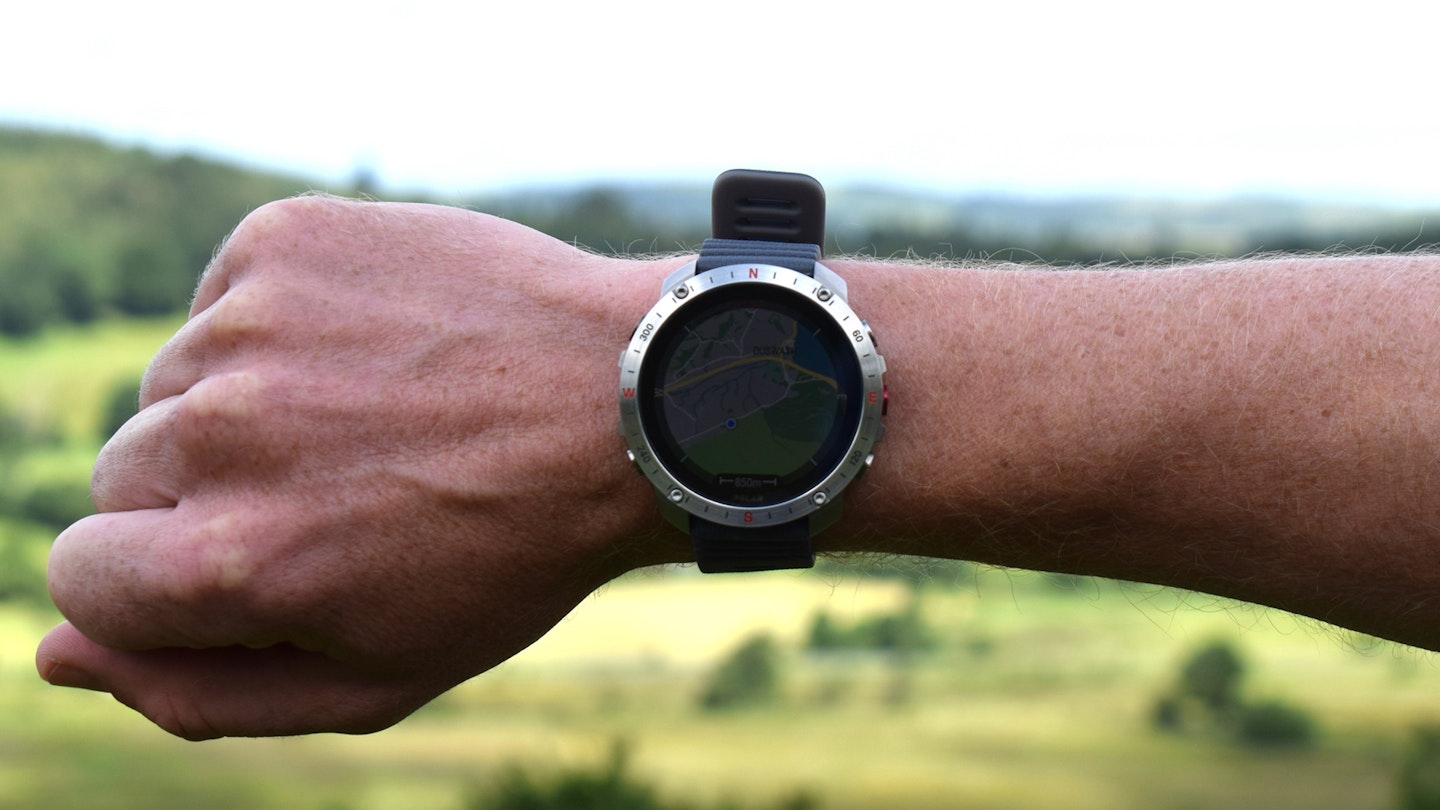
One of the main reasons the Polar Grit X2 Pro is impressive for mapping and navigation is that the large AMOLED screen is so good. On a bigger screen, you naturally get bigger maps, which means details are clearer and functionality is improved. Furthermore, with a brighter and crisper screen, the mapping is yet again clearer and easier to see.
I used the Polar Grit X2 Pro for a 10km run in Manchester, around Chorlton Water Park. I was staying in a nearby airport hotel before flying to Madeira the following day. I had no idea where I was and had zero prior knowledge of the surrounding area. But I created a running route on Komoot, uploaded it to my watch and set out into the unknown. The watch guided me on a winding 13km run along waterways and through woodland, with little arrows, a trace line and notifications keeping me on track. It worked excellently, I didn’t get lost and I was impressed with the all-round functionality.
I made one mistake with the settings – the mapping works far better with “always-on display” activated, particularly if you regularly need to check turns and don’t want the watch to go into sleep mode at the crucial moment. The next time I used the mapping features – a 21km summit-bagging run from Keswick to Buttermere – I reverted to this system and it worked far better. Of course, with the bright AMOLED screen constantly on, the battery depleted quicker than usual, but this wasn’t a major problem. My 2 hour 50 minute run used only 16% of the battery.
Running: Training, Coaching, Heart Rate and App
The Polar Grit X2 Pro arguably feels more like an all-round outdoors and adventure watch, rather than a running-centric one. But it’s still pretty decent as a trail running watch. I used it on several running outings and it always worked fine, providing all of the useful stats, insights and metrics you want to see – including heart rate via the in-built HR Sensor. You can also get lots of coaching advice and tips from Polar, such as following a 5km, 10km, half-marathon or marathon training plan (we didn’t test this), or listening to personalised tips on recovery (via the Training Load Pro feature), nutrition and much more. As with most watch brands, some of the AI-like advice seemed rather generic, almost condescending, so we ignored most of it, but some runners may find it useful.
It took a little time to get used to, but we found that the Polar Flow app worked fine, displayed useful information and synced easily with the watch.
Other Features

Two things are notable in their omission for a watch priced at £649. You don’t get any onboard music storage, so if you want to listen to music while you’re running, you’ll need to carry your phone – although you can control music, such as skipping tracks or increasing the volume, using the watch. You also don’t get contactless payment functionality.
Besides this, everything else you’d expect is present. The Polar Grit X2 Pro comes with a myriad of sports modes, as well as sleep tracking, guided breathing exercises, fuelling advice and a step counter to name but a few of its features.
Verdict
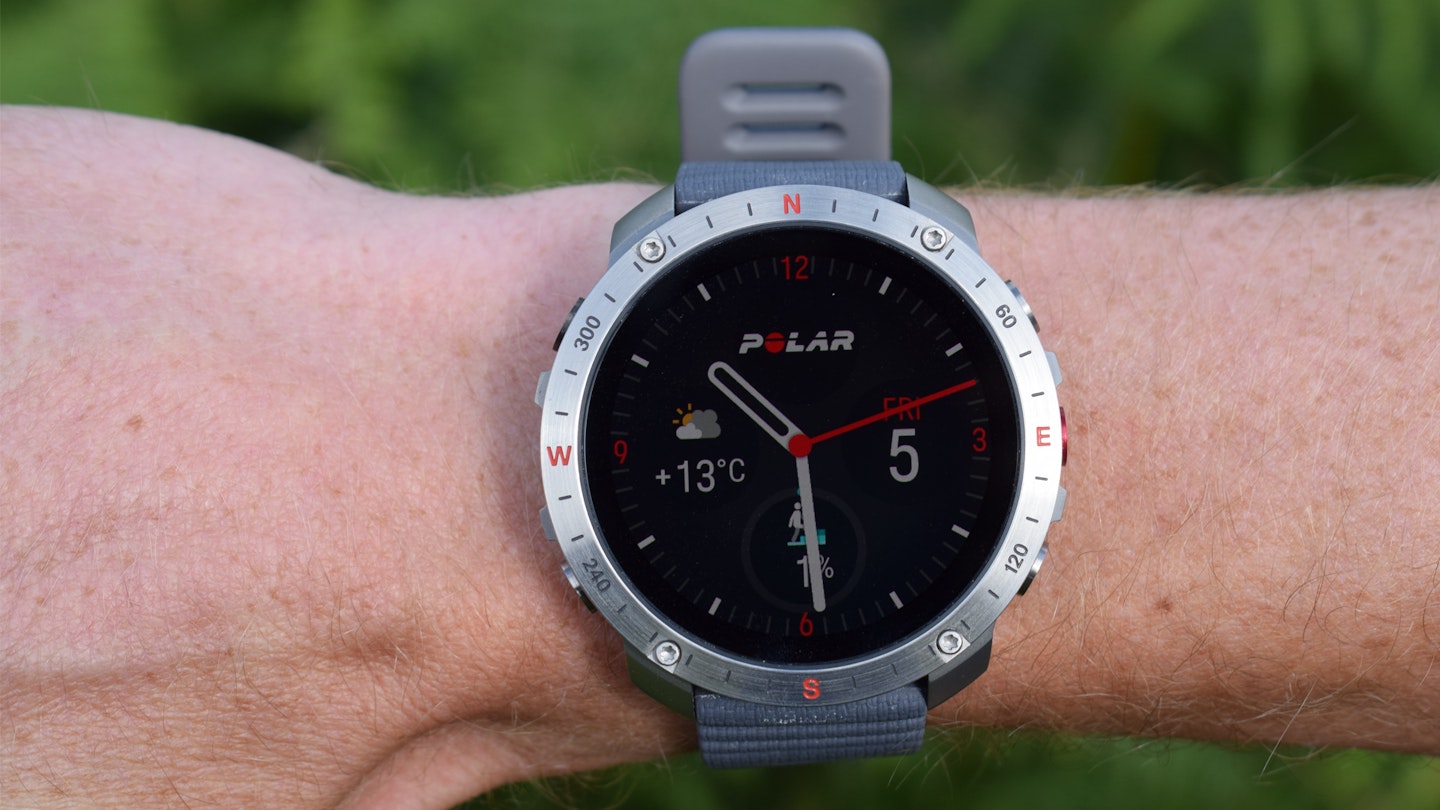
A rugged smartwatch with a superb AMOLED screen and excellent mapping and navigation options with Komoot integration – but it’s expensive, chunky and heavy
About the author
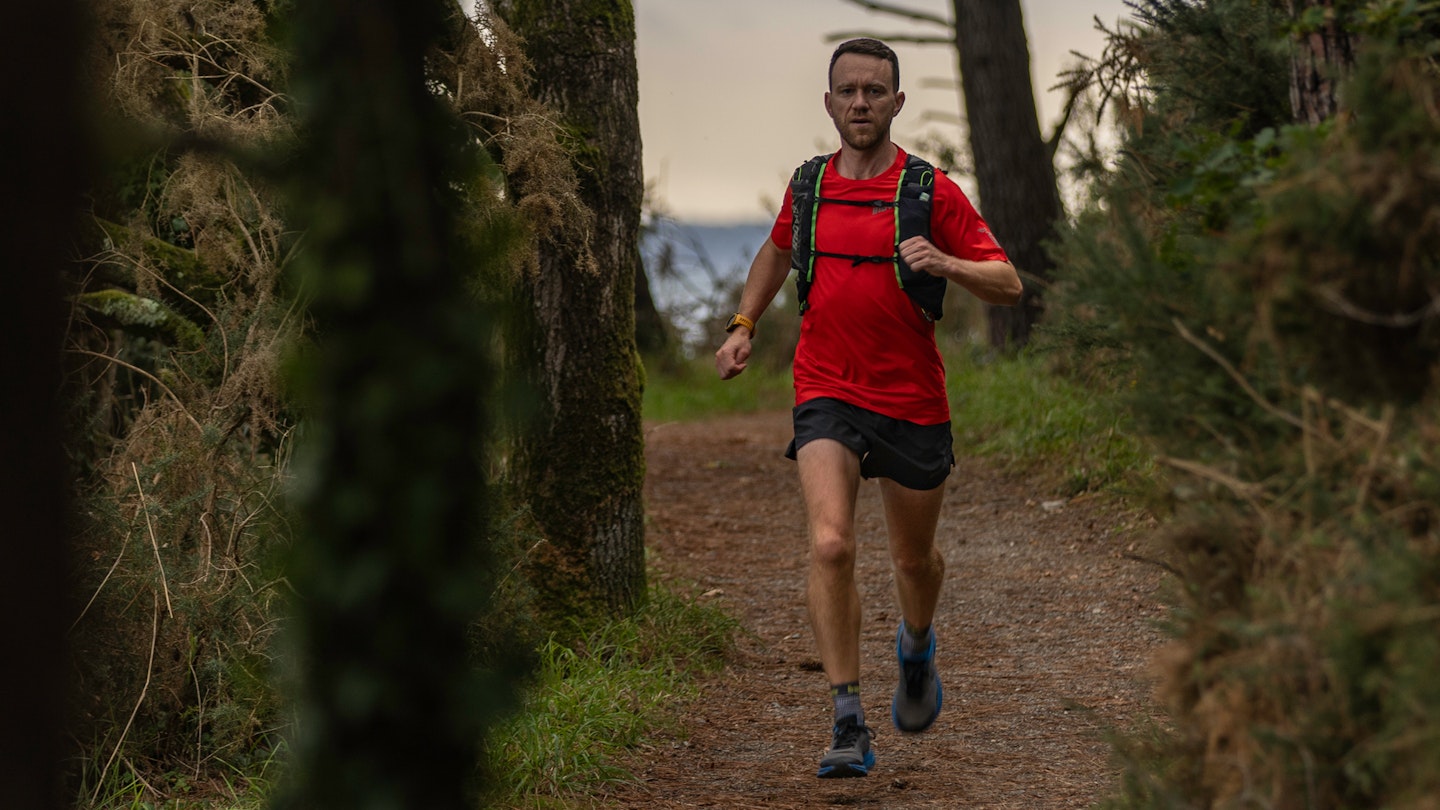
James Forrest is one of our main freelance gear testers on LFTO and our magazine, Trail. He is one of the UK's best-know and well-respected outdoor writers who has particularly good knowledge on fastpacking, lightweight backpacking, and trial running.
